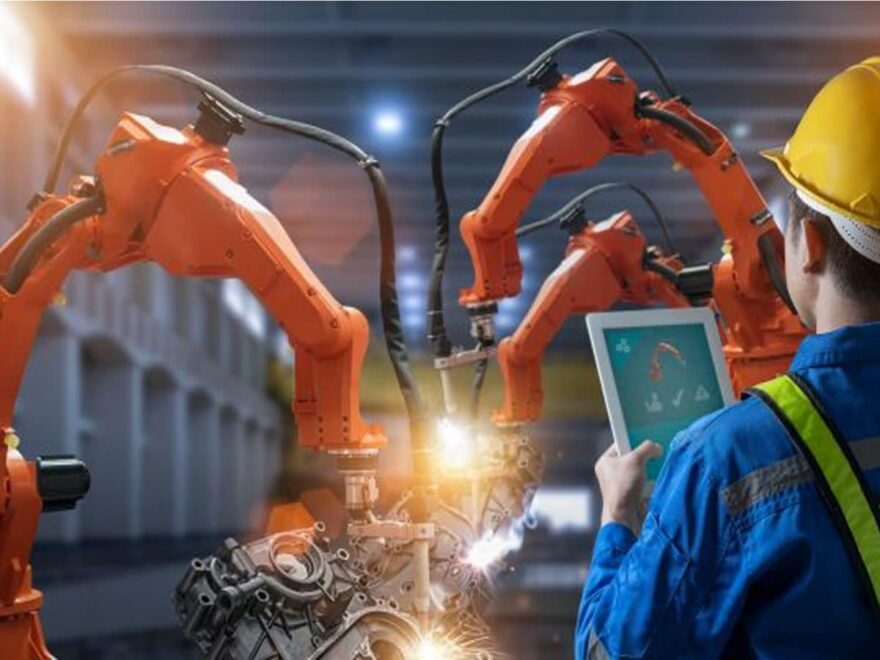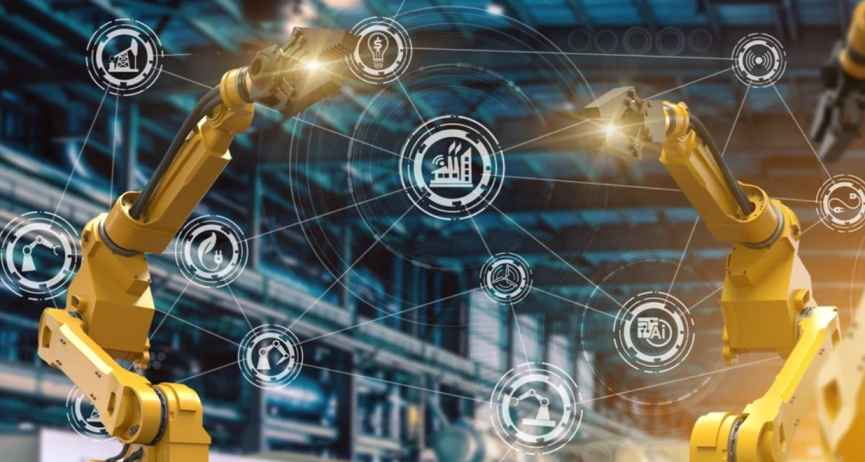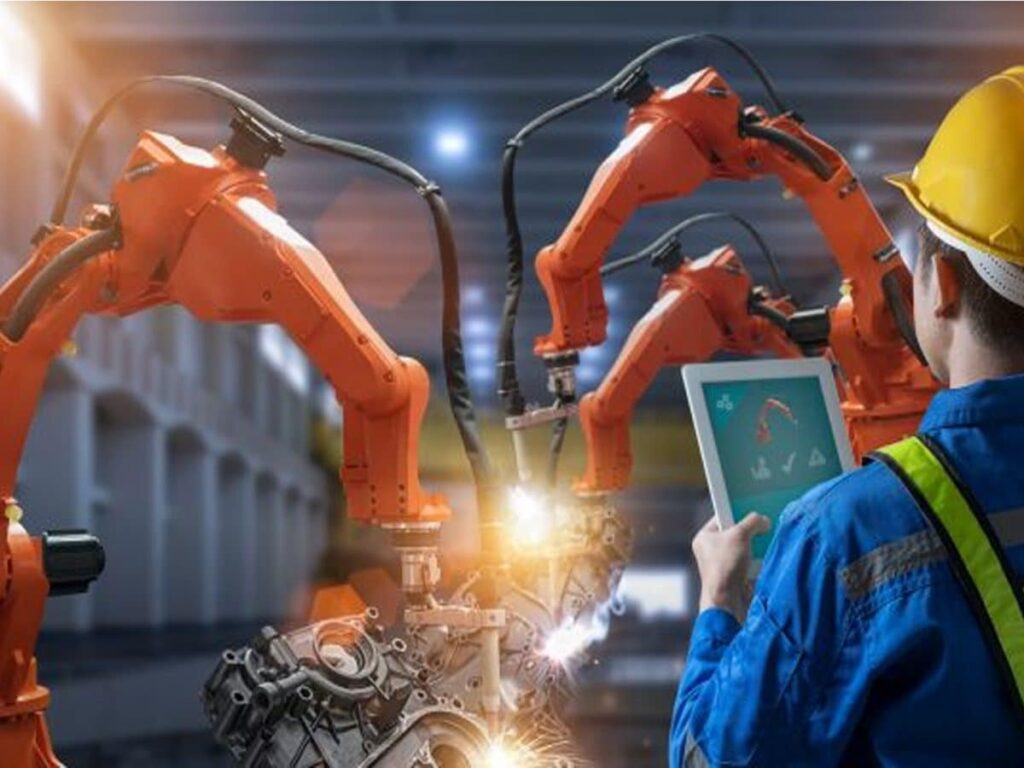The ability of 5G technology to connect countless devices and enable them to communicate instantly has opened up new possibilities. The integration of AI and 5G enables faster data processing and supports the advanced applications necessary for manufacturing and other industrial sectors.
In this article, we’ll explore how the use of 5G technology in AI and robotics is heralding a transformational shift across different industrial sectors.
Why 5G Technology is a Game-Changer?
5G technology offers enhanced mobile broadband, enabling faster download and upload speeds. 5G supports massive machine-type communication (MMTC) which means it can connect a vast number of devices simultaneously. Think about smart cities, where thousands of sensors communicate in real-time. Or consider autonomous vehicles that need to exchange data constantly to navigate safely. 5G makes all this possible.
Why do we need 5G when 4G works fine? The key reasons are:
- Speed: 5G can be up to 100 times faster than 4G which implies quicker downloads and smoother streaming.
- Latency: 5G boasts ultra-low latency, which is crucial for applications requiring real-time responses.
- Capacity: 5G can handle many more devices at once, making it ideal for crowded areas.
In industries like healthcare, real-time data can be a matter of life and death. A surgeon performing remote surgery need instant feedback which is facilitated by 5G’s low latency. Ultra-low latency is also essential for advanced applications like AI and robotics.
For example, AI-driven visual inspection technologies can identify defects instantly in manufacturing industry which improves quality control and enhances productivity. Autonomous Mobile Robots (AMRs) utilize 5G to navigate and execute tasks efficiently, adapting to their environment in real-time.
Ways AI and Robotics are Revolutionizing Industries
Automation in Manufacturing
AI is revolutionizing manufacturing automation in the following ways:
- Quality Inspection: AI systems are streamlining quality inspection processes. They can detect defects faster and more accurately than the human eye which implies fewer errors and higher quality products.
- Efficiency: By automating repetitive tasks, AI allows human workers to focus on more complex activities which boosts productivity and increases job satisfaction.
- Predictive Maintenance: AI can analyze data from machinery to predict failures before they happen. This proactive approach saves time and money.
Infact, the future of robotics is not about machines operating in isolation but rather working collaboratively with humans. This collaboration is key to maximizing efficiency in manufacturing.
The Impact of Collaborative Robots
Collaborative robots, or cobots, are designed to work alongside humans. Unlike traditional robots which operate in isolation, cobots enhance human-robot interaction. With cobots, you can achieve a seamless workflow as mentioned below:
- Safety: Cobots are equipped with sensors that help them detect human presence which makes the workplace safer, as they can adjust their actions to avoid accidents.
- Flexibility: Cobots can be programmed for different tasks which is crucial in today’s dynamic manufacturing environment.
- Cost-Effectiveness: Cobots are less expensive than traditional industrial robots which makes automation accessible for smaller businesses.
Real-Time Data Processing Enhancing Productivity
Real-time data processing play a crucial role in enhancing productivity. But what does this mean?
- Instant Decision-Making: With AI analyzing data in real-time, businesses can make quick decisions which is a game changer in competitive markets.
- Continuous Improvement: Continuous feedback loops allow companies to refine processes constantly which leads to operational efficiency and better resource management.
- Enhanced Communication: AI facilitates better communication across departments leading to a more cohesive work environment.
To sum up, AI-driven solutions are fundamentally changing the way products are manufactured and monitored. From automating quality checks to enhancing human-robot collaboration, the impact is profound. As industries continue to evolve, embracing these technologies will be essential for staying competitive.
Overcoming Challenges in AI Implementation
For successful AI adoption in any organization, you should address data quality and biases, tackle the complexities of machine learning, and establish trust in automated systems.
Data Quality and Biases
Data is the lifeblood of AI. But what happens when that data is flawed? Without clean data, even the best algorithms will fail to deliver optimal results. Poor data quality can lead to inaccurate predictions and biased outcomes. This is especially critical in sectors like healthcare or finance, where decisions based on flawed data can have serious consequences.
To tackle this challenge, you need to focus on data integrity. Start by assessing the data you currently have. Are there gaps? Are there inconsistencies? By cleaning your data and ensuring it is representative, you can mitigate biases that may skew results.
Complexities of Machine Learning
Machine learning can seem like a daunting field but understanding the basics is crucial for successful AI implementation. In machine learning, algorithms learn from data which requires a clear understanding of the problem you’re trying to solve. Here are a few steps to simplify the process:
- Define the problem clearly.
- Choose the right model based on your data.
- Train the model with quality data.
- Test and refine the model continuously.
By focusing on these steps, you can navigate the complexities of machine learning with greater ease.
Establishing Trust in Automated Systems
Trust is also essential when implementing AI. Transparency in AI processes builds user trust. You need to communicate how decisions are made and ensure that users understand the algorithms behind them. Here are some strategies to establish trust:
- Provide clear documentation on how the AI works.
- Engage users in the development process.
- Regularly update users on performance and improvements.
Conclusion
5G technology is revolutionizing AI and robotics, enabling unparalleled connectivity and intelligent automation across industries, and heralding a new era of digital transformation. The interplay between technology advancement and workforce preparation will be critical for future transitions.



2 thoughts on “The Power of 5G in AI and Robotics: What You Need to Know”